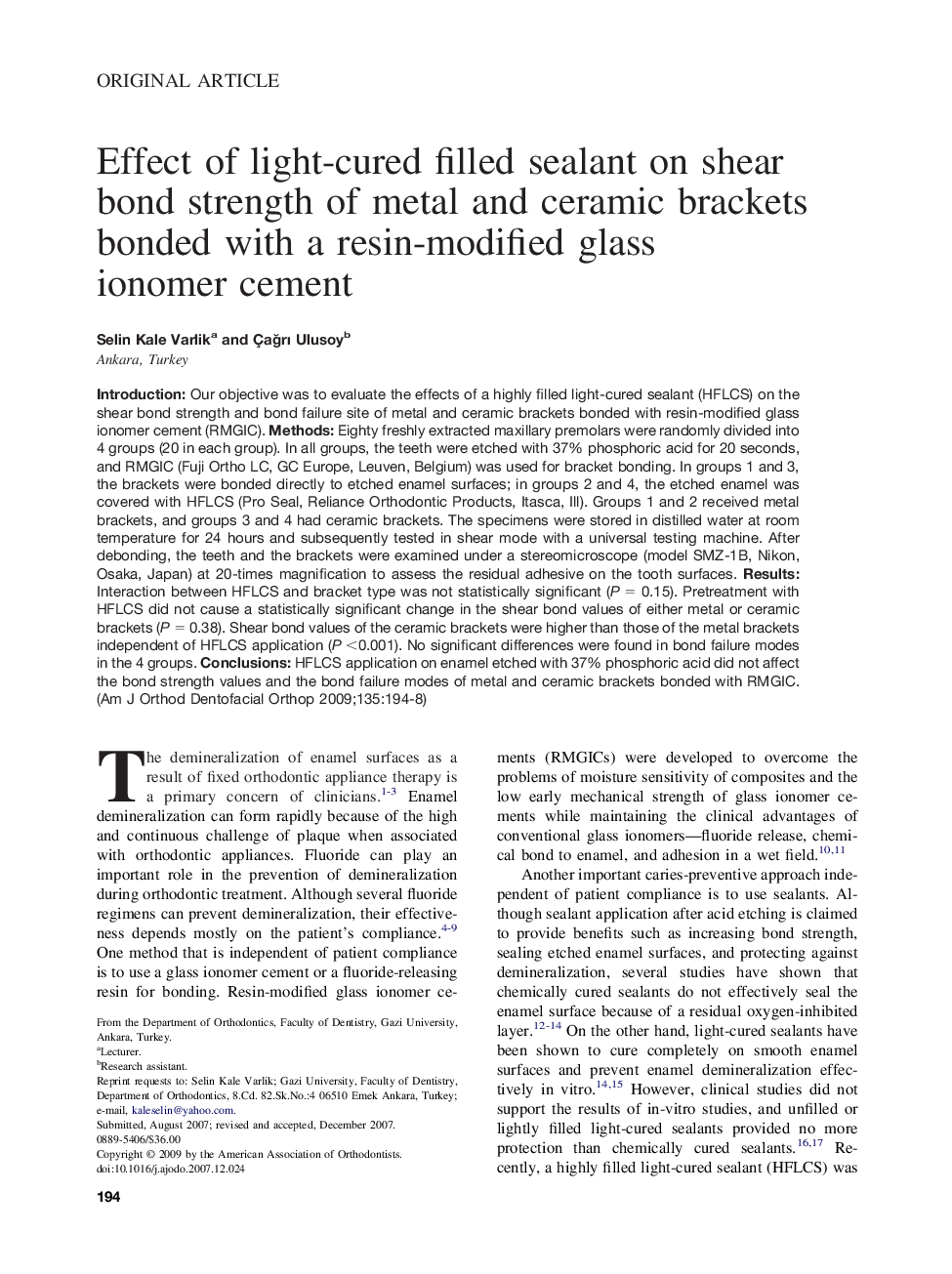| Article ID | Journal | Published Year | Pages | File Type |
|---|---|---|---|---|
| 3118277 | American Journal of Orthodontics and Dentofacial Orthopedics | 2009 | 5 Pages |
IntroductionOur objective was to evaluate the effects of a highly filled light-cured sealant (HFLCS) on the shear bond strength and bond failure site of metal and ceramic brackets bonded with resin-modified glass ionomer cement (RMGIC).MethodsEighty freshly extracted maxillary premolars were randomly divided into 4 groups (20 in each group). In all groups, the teeth were etched with 37% phosphoric acid for 20 seconds, and RMGIC (Fuji Ortho LC, GC Europe, Leuven, Belgium) was used for bracket bonding. In groups 1 and 3, the brackets were bonded directly to etched enamel surfaces; in groups 2 and 4, the etched enamel was covered with HFLCS (Pro Seal, Reliance Orthodontic Products, Itasca, Ill). Groups 1 and 2 received metal brackets, and groups 3 and 4 had ceramic brackets. The specimens were stored in distilled water at room temperature for 24 hours and subsequently tested in shear mode with a universal testing machine. After debonding, the teeth and the brackets were examined under a stereomicroscope (model SMZ-1B, Nikon, Osaka, Japan) at 20-times magnification to assess the residual adhesive on the tooth surfaces. Results: Interaction between HFLCS and bracket type was not statistically significant (P = 0.15). Pretreatment with HFLCS did not cause a statistically significant change in the shear bond values of either metal or ceramic brackets (P = 0.38). Shear bond values of the ceramic brackets were higher than those of the metal brackets independent of HFLCS application (P <0.001). No significant differences were found in bond failure modes in the 4 groups. Conclusions: HFLCS application on enamel etched with 37% phosphoric acid did not affect the bond strength values and the bond failure modes of metal and ceramic brackets bonded with RMGIC.ResultsInteraction between HFLCS and bracket type was not statistically significant (P = 0.15). Pretreatment with HFLCS did not cause a statistically significant change in the shear bond values of either metal or ceramic brackets (P = 0.38). Shear bond values of the ceramic brackets were higher than those of the metal brackets independent of HFLCS application (P <0.001). No significant differences were found in bond failure modes in the 4 groups.ConclusionsHFLCS application on enamel etched with 37% phosphoric acid did not affect the bond strength values and the bond failure modes of metal and ceramic brackets bonded with RMGIC.
